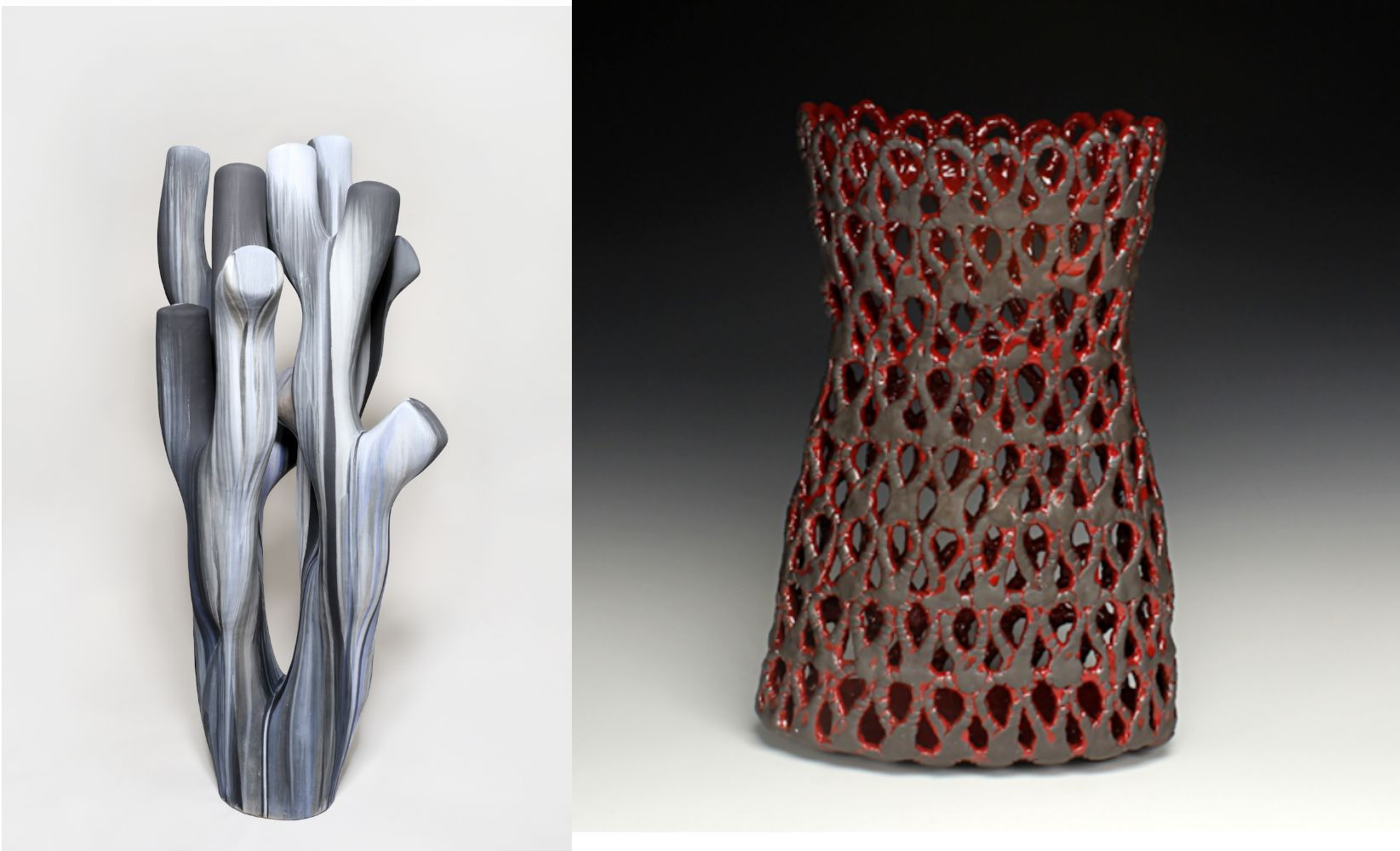Binary Form
December 2 2016 - May 13 2017
This exhibition brings together two Montana ceramists, Trey Hill and Andrea Moon. The pairing of artists generates dialogue about similarities and differences in the artists’ formalist sensibilities. Binary Form showcases the variable strengths of ceramics as a sculptural medium and how two artists working in contradictory ways use form to express content. Each uses a single recognizable object as the basis to work through introspective themes. The craftsmanship, subtle surfaces, and elegant forms have holding power and encourage contemplation.
Moon allows the clay to guide her forms and then develops the rich surface patina to create a strong push-pull within the work. She states, “I create these structures embodying negative space to question emptiness and fulfillment.” Hill, on the other hand, carefully controls his forms but is freer with his surface treatment. His works question personal identity; he asks us to look at what often goes unseen. Both artists find resolution in contradiction, and their artworks find harmony in seeming differences.
Moon’s large, basket-like forms express solidity while projecting an openness and fragility. The basket form underlies her building method where she creates a basic structure by looping and pinching hundreds of short clay ropes. The small loops are held together by repeating rows. This methodical approach predetermines the structure to some degree. The form also manifests organically through subtle imperfections and slight, gestural bends. Moon’s control of the material, and her decisions to let the clay do the work versus when to restrain it, impart a sublime resolution to her sculptures and define her formal aesthetic.
Hill’s sculptures are formally pure, with clean lines and impeccable construction. He uses these elements to investigate what we see and do not see. Influenced by his recent residencies in China, Hill’s sculptures tend to be minimal, emphasizing the abstract or unknown instead of literal objects. The central form around which he builds is the graceful elegance of the idealized tree form, drawn from Greek and Roman classical sculpture. The tree, used as a support for fragile marble figurative sculptures, is a profound analogy for what goes unseen but is essential to our existence. Atop Hill’s abstract, stylized forms is an underglaze surface of flowing color that mimics the qualities of water and seems as natural as rain. In this way, Hill is open to the unpredictability that reflects life.


